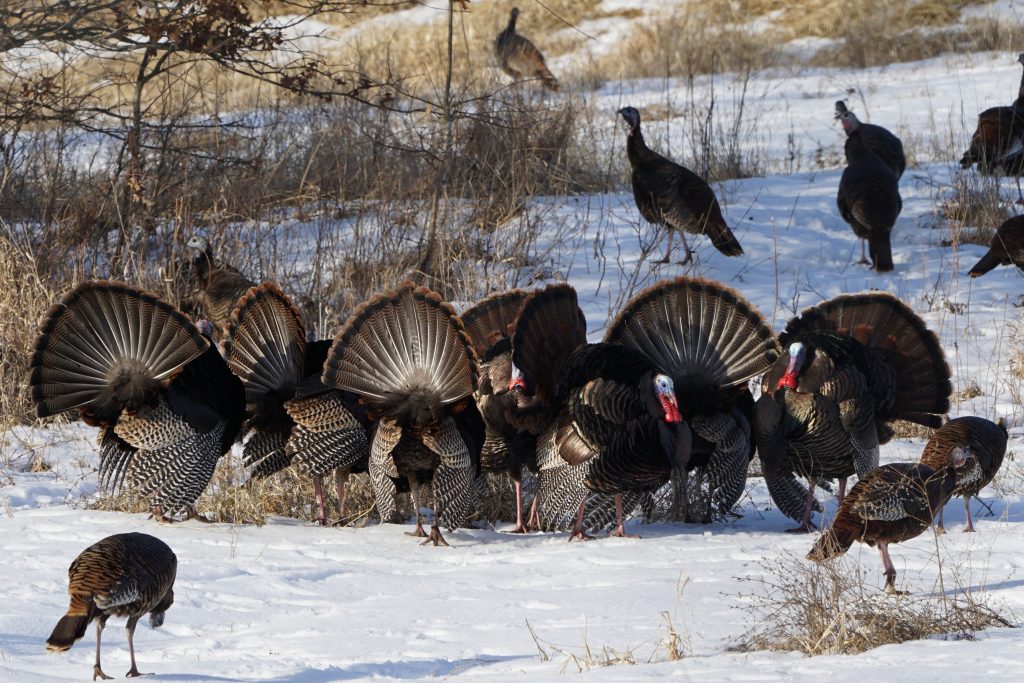The Dynamics of Winter Turkey Flocks
The cold months of winter push wildlife species to adapt their behaviors and survival techniques, and wild turkeys are no exception.
During this time, turkeys gather in large flocks for several reasons, including moving to lower elevations to escape harsh weather, increasing access to food and benefiting from the safety in numbers. These flocks are typically divided by sex, with male and female groups forming separately. Within these winter flocks, a pecking order is also established, determining dominance for the upcoming spring season.
“Turkeys form big winter flocks for biological reasons,” said Patt Dorsey, NWTF director of conservation in the west. “Seeing large flocks of turkeys in the winter is normal. It's not unusual or an indication that the population is growing.
Additionally, the presence of large winter flocks often tests the social acceptance of turkeys in both rural and suburban areas. In many cases, the level of tolerance and empathy shown toward these wintering birds ultimately influences the acceptable population size within a given area.
Cold weather places significant demands on birds, leading them to conserve energy by limiting movement and relying on hard masts like acorns, crops, seeds and other plant materials. Turkeys will also seek out denser vegetation for shelter, helping them withstand the harsh winter conditions.

With large winter flocks comes an increase in turkey-human interactions, particularly in residential areas. Neighborhoods often attract turkeys due to the reduced presence of predators, easy access to food, an abundance of ornamental plants in gardens and landscaping and a plethora of roosting trees. During the colder months, turkeys expend as little energy as possible searching for food, making them opportunistic feeders — much to the frustration of property owners who bear the burden of flocks raiding their gardens.
There are pros and cons for sharing our space with wildlife, but being educated on the wildlife around you can ease the difficulties and help find solutions to coexist.
If your neighborhood is facing challenges coexisting with wild turkeys, there are steps you can take while waiting for their natural spring dispersal. The most important action is to avoid providing artificial food sources. This means securing chicken coops to prevent turkeys from eating poultry feed, fencing off garden areas and minimizing excess birdseed spilling from feeders.
“Wildlife conflicts are often one part biological to two parts social,” Dorsey said. “Wintering turkey flocks are no different. Their biological drive to survive is simple. The social parts include our attitudes and our actions. We can choose whether or not we view turkeys and other wildlife as too many, or we can choose to view them as adapted to winter. We can choose to feed them, or we can choose to trust that nature knows best.”
Living with wildlife is complex, and there’s rarely a simple solution. Coexisting with a large flock of turkeys can be both challenging and, at times, entertaining. While some people find their presence frustrating in suburban areas, others look forward to watching their antics each year. And honestly, who wouldn’t love the sound of toms gobbling outside their bedroom window as a natural alarm clock?
CONNECT WITH US
National Wild Turkey Federation
770 Augusta Road, Edgefield, SC 29824
(800) 843-6983
National Wild Turkey Federation. All rights reserved.
